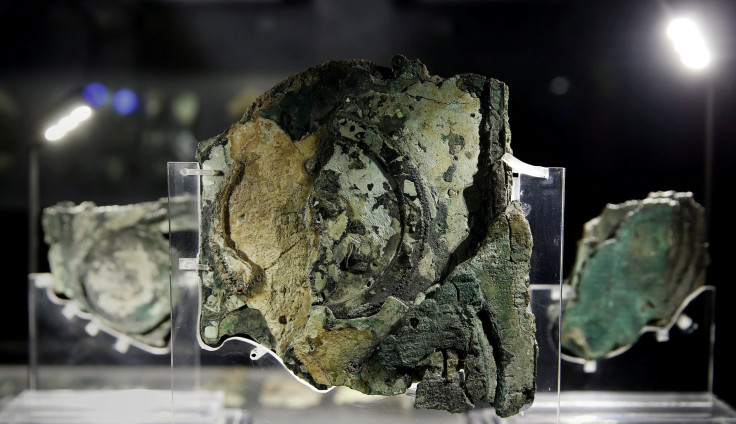Antikythera Mechanism Facts: Things To Know As Google Celebrates 115th Anniversary Of Its Discovery

Google celebrated the 115th anniversary of the discovery of the Antikythera mechanism Wednesday with a doodle illustrating "how a rusty remnant can open up a skyful of knowledge and inspiration." The mechanism, discovered by Greek scientists, is now kept at the National Archaeological Museum in Athens.
“The Antikythera mechanism tracked planetary positions, predicted lunar and solar eclipses, and even signaled the next Olympic Games. It was probably also used for mapping and navigation,” Google said.
“A dial on the front combines zodiacal and solar calendars, while dials on the back capture celestial cycles. Computer models based on 3-D tomography have revealed more than 30 sophisticated gears, housed in a wooden and bronze case the size of a shoebox.”
So what is the Antikythera mechanism? Here are 10 facts about the world's first analogical computer, used by ancient Greeks.
1. More than a hundred years ago, divers off the island of Antikythera came across this clocklike mechanism while sifting through artifacts recovered from a Roman shipwreck.
2. The device was believed to have been under the sea for 2,000 years. It was probably made in Greece between 200 and 70 B.C.
3. Researchers used improved and advanced X-ray technology to uncover new features hidden on the device’s remaining fragments, leading to the discovery of at least 30 different gears present in it. State-of-the-art scanning devices have been used to decipher about 3,500 characters of explanatory text written in ancient Greek beneath the surface of the corroded fragments.
4. According to the Smithsonian Magazine, the Antikythera mechanism was about the size of the mantel clock and bits of wood found on the device indicated it was kept in a wooden case.
5. Some of the inscriptions on the device refer to the “color” of a forthcoming eclipse.
6. “Like a clock, the case would’ve had a large circular face with rotating hands. There was a knob or handle on the side, for winding the mechanism forward or backward,” the Smithsonian Magazine wrote about the device's functioning. “And as the knob turned, trains of interlocking gearwheels drove at least seven hands at various speeds. Instead of hours and minutes, the hands displayed celestial time: one hand for the Sun, one for the Moon and one for each of the five planets visible to the naked eye—Mercury, Venus, Mars, Jupiter and Saturn."
Giving further details about the functioning, the magazine wrote: “A rotating black and silver ball showed the phase of the Moon. Inscriptions explained which stars rose and set on any particular date. There were also two dial systems on the back of the case, each with a pin that followed its own spiral groove, like the needle on a record player. One of these dials was a calendar. The other showed the timing of lunar and solar eclipses.”
7. In 1959, Princeton science historian Derek J. de Solla Price deduced the mechanism was used to predict the position of the planets and stars in the sky depending on the calendar month. “The mechanism is like a great astronomical clock ... or like a modern analogue computer which uses mechanical parts to save tedious calculation,” Price had said at the time.
8. In 1974, Price presented a model of how the Antikythera mechanism might have functioned.
9. The Antikythera mechanism captured broader attention in 2006 after Mike Edmunds of Cardiff University in Wales published CT scans of the fragments, revealing more details of the inner workings of the device.
10. In a 2016 interview with the Associated Press, Alexander Jones, a professor of the history of ancient science at New York University, called it a “philosopher’s instructional device.”
© Copyright IBTimes 2024. All rights reserved.





















